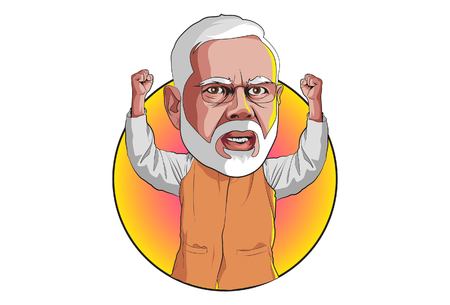Congress and socialists together helped Hindu communal organizations to grow in India, who later devoured them as well
From just two seats in 1984, the Hindu nationalist Bharatiya Janata Party (BJP) in India steadily increased its foothold on the political spectrum, winning 300 seats in the 2019 elections. Now, it is targeting to win 370 out of the 543 Lok Sabha seats.
Journalist Qurban Ali who has delved deep into the genesis of communalism in India in his research, points out that the secular Congress and the socialists actually nurtured Hindu communalism for their conveniences, which ultimately devoured them as well.
Decades ago, the socialists were a formidable force, challenging the dominant Congress party and governing several states. Prominent figures like Jayaprakash Narayan and Ram Manohar Lohia initially combated communalism fiercely, especially following Mahatma Gandhi’s assassination in 1948.
However, by 1975, their stance had softened, allowing engagements with groups like the RSS.
By 1998, socialist leader George Fernandes was instrumental in bringing the BJP, the political face of the RSS, to power through various alliances. The influence of socialists by then had dwindled as slowly and steadily Hindu nationalists replaced them.
Today, few in India are familiar with socialist parties like the Janata Party, Lok Dal, Forward Bloc, Sanyukta Socialist Party, and Praja Socialist Party, etc., which once stood as formidable political entities and primary adversaries to the Congress.
-Congress’s hand in the rise of communalists
Turning to Congress, India’s first Prime Minister Jawaharlal Nehru once identified communalism as a severe threat. However, under Indira Gandhi and subsequently Rajiv Gandhi, the party shifted from Nehru’s secularism to a more overt communal stance, particularly visible during their tenure.
The change was palpable under Indira Gandhi and reached its zenith with her son, Rajiv Gandhi during their premiership. Indira Gandhi’s rule marked a departure from Nehru’s secularism, and her association with the RSS had become quite apparent.
As a result, Rajiv Gandhi was the last Congress prime minister to rule the country with his majority. The next two Congress governments under Narasimha Rao and Manmohan Singh were dependent on the support of allies.
In the 1983, assembly elections in Jammu and Kashmir, Indira Gandhi openly used the Hindu card. For the first time, someone used a political advantage by polarising the Hindu-majority Jammu against the Muslim-majority Kashmir Valley in such a sensitive region.
She was telling the Hindu voters in Jammu that only the Congress can protect them. To the Muslims in the Kashmir Valley, she conveyed the message that their future is not safe in the shadow of Indian democracy.
All the seats in Jammu fell to the Congress in these elections, but the situation changed rapidly thereafter, culminating later in the armed movement of 1989. Indira Gandhi had left her mark on the whole thing. The RSS openly supported the Congress in these elections.
According to Ali, Indira Gandhi met RSS leaders three times between 1982 and 1984. She extended support to the Ram Mandir campaign of the Vishwa Hindu Parishad (VHP), another branch of the RSS.
In January 1986, during Prime Minister Rajiv Gandhi’s tenure, when the Babri Masjid was opened and Hindus were allowed to pray there, RSS chief Muralidhar Deoras described Rajiv Gandhi as the “King of Hindu Hearts.”
Similarly, an epic serial on the Ramayana was aired on the state television channel Doordarshan. This added fuel to the Ram Mandir movement. The then Minister for Information and Broadcasting, HKL Bhagat had strongly opposed it, saying it would unleash the poison of communalism and open Pandora’s box.
Similarly, in 1989, the foundation of Ram Mandir was laid by no one else but by Rajiv Gandhi himself at the request of the RSS. On the occasion, Rajiv Gandhi said that if he came to power again, he would declare Ram Rajya.
But the Congress lost the elections. Its tally in the parliament was drastically reduced from 414 to 196 seats.
Meanwhile, the RSS had decided to withdraw its support from the Congress and bring its own political wing, the BJP, to power and strengthen it politically. In these elections, the BJP had jumped from two seats to 85 seats.
The Congress’s use of the Hindu card, the Ram Mandir campaign, and the aggressive screening of religious epics on state television — all actions that fanned the communal flames — demonstrate this.
If now the Congress wants to embark on a path of secularism, the only way to pull the country out of this quagmire is by taking the communalists head-on. There is a need to learn from the fate of the socialists who compromised and were finished from the political landscape.
The party also needs to learn the fate of its own leaders and hold Indira Gandhi and Rajiv Gandhi accountable for appeasing communalists.
Otherwise, the monster of communalism is ready to devour and digest the Congress and Modi’s dream of a Congress-free India will be realised.




